Archive
Occupy protest prevented from reaching bank – in pictures
On Friday, April 13, members of the Occupy movement gathered in Zuccotti Park for training before beginning a march to a local branch of Bank of America. that the NYPD would prevent from reaching its apparent goal of protesting at Bank of America. This photo show documents what happened.
Members of the Occupy movement listen as several people address them, discuss tactics and give instruction on how interact with police.
The theme of protest was too big to fail, a reference to large corporations and banks receiving bailouts.
The bank that protesters singled out for criticism was Bank of America, as is depicted in this piece of art the man is holding.
The participants were from a diverse background. In the picture, a member of the “Granny Peace Brigade” carries a banner.
Occupy members included a woman who was guiding a blind man in the training session of the event. The amount of work and dedication required on their part was not small. This protest involved hundreds of people marching in close order.
The police were aggressive in their attempt to keep protesters out of the street. When protesters began marching, the police pursued them on all sides, especially on the sides. The side of the crowd facing the street were harassed by officers who used their mopeds as moving barrier. This was a problem for anyone, protesters and journalists alike. At one point, an officer drove his moped onto the sidewalk; there were no injuries reported. One can imagine how the blind man in the previous picture would have walked knowing that accidentally stepping into the street could have meant being hit by a police scooter.
The police had their nightsticks at the ready in case the crowd turned unruly (which it did not).
Numerous police officers had plastic handcuffs at their sides, an indication that perhaps they expected a number of arrests.
A young man holds a sign that expresses anger over what some Occupiers feel are arbitrary of wrongful arrests.
Some tourists showed support to the Occupy protest and others just took pictures like these ones above.
A man passing by watches the protest as it goes along City Hall near Bank of America.
The crowd stopped across the street from Bank of America. The police did not allow them to cross the street.
Across from the protesters, police refused to allow anyone to enter the bank. Not even clientele unrelated to the Occupy movement were allowed to enter its doors. In this picture above, the police prevent a man from entering and direct him to another location, even though there were people in the bank and it was during banking hours.
Anti-Nuclear Protests mark Anniversary of Fukushima Disaster
In this video, Civis Journal looks at the recent protest to gauge the way in which Japanese in New York chose to mark the one year anniversary of the disaster. Exactly one year to the day, Japan held a nationwide memorial to remember the victims of the 3/11 earthquake and tsunami. In addition, protesters in Japan and New York called attention to the ongoing radiation problems in the Fukushima area. They called on the Japanese government to protect people’s health, and to end its use of nuclear power.
Occupy members stand in rain to protest the Federal Reserve

Protesters stage a protest outside the New York office of the Federal Reserve in the rain on November 22, 2011.
November 24, 2011
They met at the corner of Liberty and Nassau Streets in the late afternoon of November 22, 2011. About 20 protesters held signs for more than an hour just across the street from a Chase bank, directly outside the Federal Reserve building. It was a miserable evening, filled with rain and chilly air.
About a dozen police officers were around the intersection, with at least another two dozen or so just a block away. A police truck was parked opposite the protesters, apparently serving as a reminder that disorderly conduct would not be tolerated, one protester remarked.
Some of the protesters are affiliated with Occupy Wall Street, and a few had signs with words like “virtual monopoly,” “semantic deception,” whilst other held pictures of Presidential candidate Ron Paul. They also chanted similar slogans, with a few members openly expressing support for Mr. Paul.
Christina Gomez, 31 from Florida, said she had come to the area in the belief that “the Federal Reserve should be ended”. She also said that, whilst she was not a supporter of Ron Paul per se, she would support “anybody’s who’s interested in ending the central control of our banking,” listing Representatives Dennis Kucinich (D-OH) and Sandra Adams (R-FL) as other politicians with whom she agrees on certain ideas.
An Asian American protester affiliated with Occupy, who identified himself as Ross, shared Ms. Gomez’s ideas on closing the Federal Reserve. He said, “Pretty much any problem you can name related to the financial crisis, this all comes through the Federal Reserve.” He added, “our money is valued based on what the Federal Reserve sets, and they’re not accountable to the US government.”
In discussing the presence of some Ron Paul supporters at Occup events, he said, “There’s a fair amount of overlap” with the Tea Party on “economic issues” and “restoring the rule of law”, though he pointed out that the two groups hardly ever meet. He seemed to entertain the idea that a sort of bridge of understanding between the two groups could be built, and that – at least on some issues – they might be able to meet each other half way across it.
One protester, who did not give his name, said that police gave him a hard time when he looked in the back of a police van, saying he had peered in to see what was inside, though he said he had stepped on the van to do so. No confrontations were observed when our reporter was at the scene, and a few police officers actively engaged in friendly conversations with protesters.
Staff Reporter
Anti-Nuclear Protests mark Anniversary of Fukushima Disaster
Civis Journal is now producing additional content, which can be accessed via our online channel. In a report that looks at the first anniversary of the disaster in Japan, we examine how Japanese and American activists have begun to call for the Japanese government to take greater measures to address the public concerns over radiological contamination. The report is Anti-Nuclear Protests mark Anniversary of Fukushima Disaster, and can be seen on our online channel posted below.
Japanese Protest Continued Use of Nuclear Power on Fukushima Anniversary

A Japanese organiser addresses the crowd of supporters at an anti-nuclear rally on the north west corner of Union Square on Sunday, March 11, 2012.
Staff Writer
On Sunday, March 11th millions in Japan took part in or watched the national memorial of the first anniversary of the 2011 earthquake, tsunami and nuclear disaster. With an estimated 20,000 killed, over 200,000 displaced and the lives of millions disrupted, it was an emotional day by any standard. Not all, however, chose to observe the day as one of silence or meditation. Tens of thousands took to the streets to protest the
ongoing use of nuclear power, the contamination in Japan and concerns over people’s health.
Half a world away, the local Japanese community took part in similar activities, with some preferring a memorial service and others taking to the streets to demand a halt to the Indian Point power plant in New York.
The group in question, 3/11 Action New York, held a rally at the northwest corner of Union Square. Beginning at 1 pm, Japanese and American organisers stood next to a marching band and explained why they opposed nuclear power. “After one year, the nuclear disaster has not been solved at all, and the situation is deteriorating,” said Kazuko Ito, Secretary General of Human Rights Now, a group based in Tokyo. Ms. Ito made it clear that she is deeply concerned about the lives of people in Fukushima. She made a special appeal to “the international community” to help the vulnerable living outside the exclusion zone who, she said, have no choice but to remain in the affected areas since the government have not provided any compensation to relocate. Some speculate the increased exposure to radiation might cause future cancers or birth defects; the Japanese government insists that a release equivalent to 168 Hiroshima bombs is not going to cause any immediate health effects, and have begun to offer medical screenings for Fukushima residents.
Ms. Ito pointed to two mothers who had travelled from Fukushima Prefecture to speak about their ordeal, one of whom – along with her 10-year-old son – had been interviewed by ABC.
Ito and other speakers at the event drew comparisons with the Indian Point nuclear plant in upstate New York and the possibility of an earthquake hitting it one day. “Here in New York we are at risk of a Fukushima-style disaster. Nuclear power is a disaster,” shouted Peter Rugh of Occupy Wall Street to an approving crowd of over 100 hundred people. “We’re organising in this city to shut down our own Fukushima before it happens.” Though New York does not get a lot of earthquakes on the magnitude of the one that struck Japan, protesters sounded the alarm, saying that the risk of an earthquake, however small, outweighed the benefit of nuclear power. Instead, they proposed instead heavy investment in renewable energy, which they said the US and Japan are technologically capable of achieving.
Following the Fukushima disaster last spring, the Japanese government decided to reorganise the nuclear agency charged with overseeing the 54 commercial reactors in Japan and no longer leave it under control of the Ministry of Economy. Due to go into effect this April, it is not clear if it will help to restore the badly shaken confidence in the Japanese government, which did not admit to the three meltdowns in March when it knew of them; it was only when TEPCO revealed the existence of the triple meltdowns in May that some realised the extent to which the Japanese government and TEPCO covered over the facts, protesters argued. Protesters in New York on Sunday made it clear they did not trust either the Japanese agency or its American counterpart, the NRC, to keep communities safe. “The NRC is the lapdog of the nuclear industry,” sang a group of grandmothers as others mimicked dog howls. “Shut it down,” they chanted repeatedly in reference to Indian Point, a power plant located about 30 miles north of NYC. If an accident should occur, NYC would fall well within the exclusion zone, organisers said.

A Japanese man holds a sign calling for New York to close the Indian Point nuclear power plant as he marches with the crowd on March 11, 2012.
One of the points demonstrators addressed is the massive cleanup operation in Japan. The burning of debris is a controversial matter, with sometimes fierce opposition on the part of residents, such as with the burning of wood during Obon in the summer of 2011. Prime Minister Noda’s government increased the pressure on local municipalities to cooperate in its nationwide programme of burning debris all over Japan by sending letters on March 16th; many local administrations are bowing to the pressure, reports EX-SKF, a prominent anti-nuclear media site. Opponents say that the burning of contaminated debris could endanger their health, an argument echoed on Sunday by 3/11 Action New York. The Japanese government have set a limit of 8,000 becquerels for these items and insist the practice is safe. In a press conference reported on in the Japan Times, Chief Cabinet Secretary Fujimura said that the rubble was not from near the plant, and insinuated that the people were mistaken to believe the debris contained harmful levels of radiation. With the widespread proliferation of radiation way beyond the borders of Fukushima Prefecture, however, the government concedes it must conduct tests to demonstrate that any debris is below its standard.
Following the rally in New York, demonstrators marched from E. 17th Street to Central Park, where a small remnant decided to stage a protest outside the residence of the Japanese Counsel General. Referring to a speech protesters said he had given on March 10th, one unnamed Japanese woman said through a blow horn, “I was so disappointed….you didn’t mention anything about n
uclear power or evacuees from Fukushima.” She concluded by saying that “contamination is everywhere,” and was followed by a about a dozen protesters who chanted “sayonara nukes” (goodbye nuclear power in English) and “shame on you.” No one from the Counsel’s residence responded to the protesters demands or appeared to give a comment, though they were met by a security agent who prevented protesters from placing yellow balloons near the home of the Counsel General. The Counsel General could not have responded to the protesters, as he was likely still at the inter-faith ceremony at Judson Memorial Church, as was later reported in the Mainichi newspaper.
Reporting of this event received little coverage in the American and Japanese press, which put much more emphasis on the ceremonies than on protests. The Maninchi newspaper briefly discussed the New York protest in a March 12 article, giving the attendance at “more than 100 people.” Protesters present at the event, however, estimated about 200 people present.
With the emperor and prime minister leading solemn moment of silence in an event televised round the world, one could understand the deep emotional significance such a day had. Attendance at some Japanese protests was likely reduced due to the reluctance of Japanese to mix mourning with protests, reports William Milberry from Japan.
All Rights Reserved,
Civis Journal 2012.

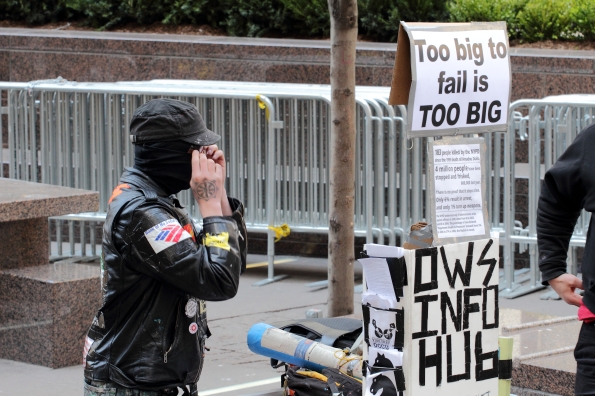


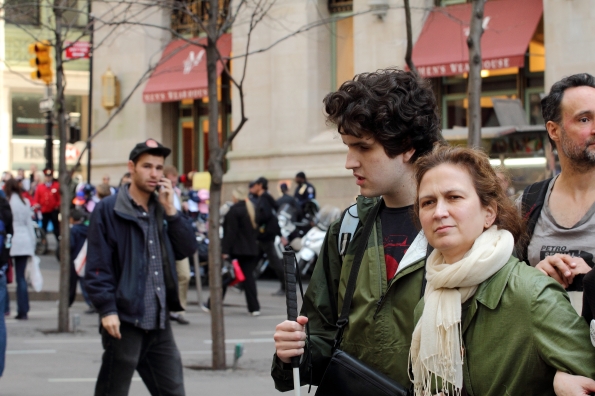


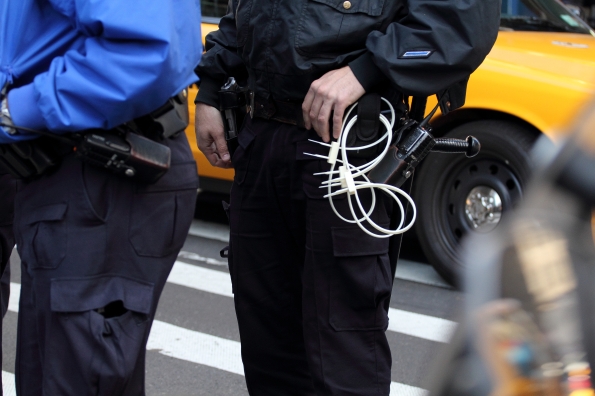


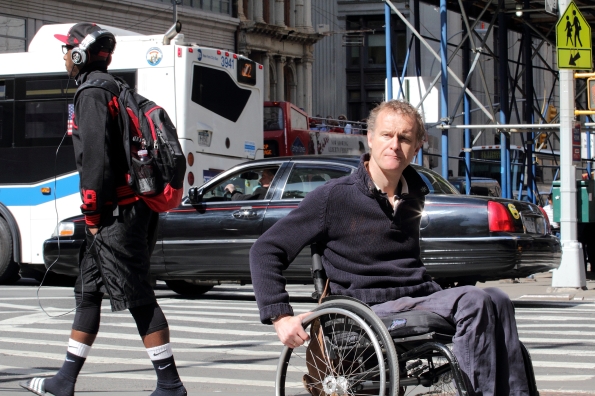

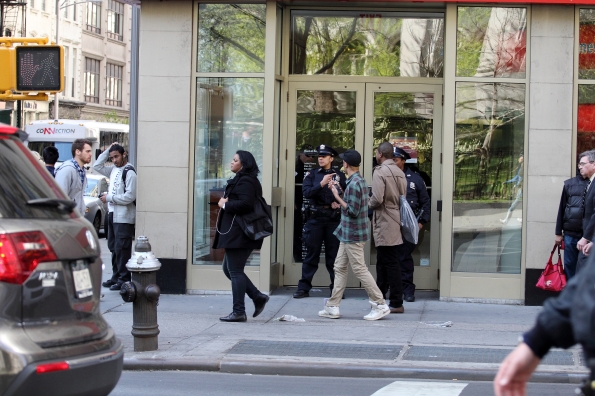

You must be logged in to post a comment.